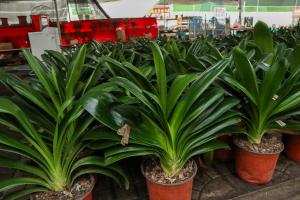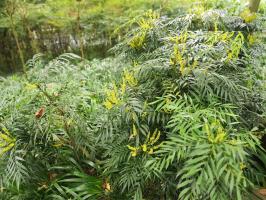Which Structures are Common to Both Plant and Animal Cells?
Plant and animal cells are two of the most commonly studied types of cells in biology. Although they have some differences, there are also many features that are shared between the two. In this article, we will explore some of the structures that are common to both plant and animal cells.
The Cell Membrane
One of the most fundamental structures that is found in both plant and animal cells is the cell membrane. The cell membrane is a thin, flexible layer that surrounds the cell and separates its internal environment from the external environment. It is made up of a phospholipid bilayer, which is a double layer of phospholipid molecules. The cell membrane plays a crucial role in maintaining the integrity of the cell and regulating the movement of materials in and out of the cell.
The Nucleus
Another structure that is common to both plant and animal cells is the nucleus. The nucleus is the control center of the cell, and it contains the cell's genetic material in the form of DNA (deoxyribonucleic acid). The nucleus is surrounded by a nuclear membrane, which regulates the movement of materials in and out of the nucleus. Inside the nucleus, the DNA is organized into structures called chromosomes, which contain the genes that control the cell's functions.
Mitochondria
Mitochondria are another example of a structure that is found in both plant and animal cells. Mitochondria are organelles that are responsible for producing energy for the cell in the form of ATP (adenosine triphosphate). They are sometimes referred to as the "powerhouses" of the cell because of their role in generating energy. Mitochondria are surrounded by two membranes, and they contain their own DNA, which is separate from the DNA in the nucleus.
Endoplasmic Reticulum
The endoplasmic reticulum (ER) is another structure that is common to both plant and animal cells. The ER is a network of flattened, interconnected sacs and tubes that extends throughout the cell. There are two types of ER: rough ER, which is studded with ribosomes and is involved in protein synthesis, and smooth ER, which is involved in lipid synthesis and detoxification. The ER plays an important role in the transport of materials within the cell.
Golgi Apparatus
The Golgi apparatus is yet another structure that is present in both plant and animal cells. The Golgi apparatus consists of a series of flattened, membrane-bound sacs or cisternae. It is responsible for modifying, sorting, and packaging proteins and lipids for transport to their final destinations within the cell or for secretion outside of the cell. The Golgi apparatus is often referred to as the "post office" of the cell because of its role in sorting and directing molecules to their appropriate destinations.
Vacuoles
While vacuoles are more commonly found in plant cells, they are also present in some types of animal cells. Vacuoles are membrane-bound sacs that are used for storage within the cell. In plant cells, vacuoles are often large and prominent, and they can occupy up to 90% of the cell's volume. In animal cells, vacuoles are typically smaller and less prominent, but they still play an important role in storage and waste disposal.
Conclusion
In summary, there are many structures that are common to both plant and animal cells. These include the cell membrane, the nucleus, mitochondria, the endoplasmic reticulum, the Golgi apparatus, and vacuoles. By understanding the similarities and differences between these structures, researchers can gain insights into the fundamental processes that occur within cells and the ways in which organisms have evolved to adapt to their environments.

 how many times do yo...
how many times do yo... how many planted tre...
how many planted tre... how many pine trees ...
how many pine trees ... how many pecan trees...
how many pecan trees... how many plants comp...
how many plants comp... how many plants can ...
how many plants can ... how many plants and ...
how many plants and ... how many pepper plan...
how many pepper plan...































